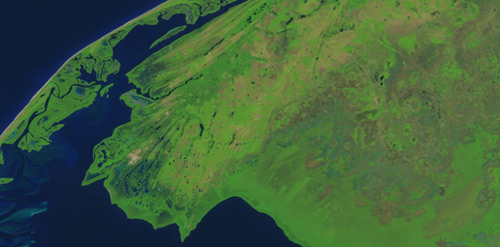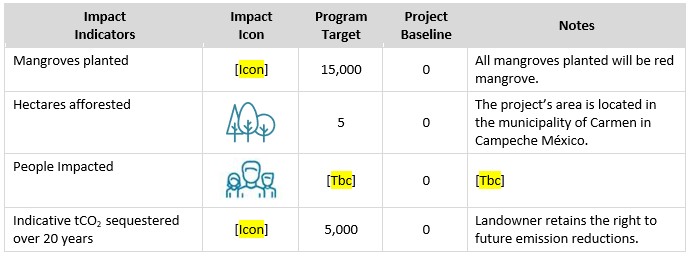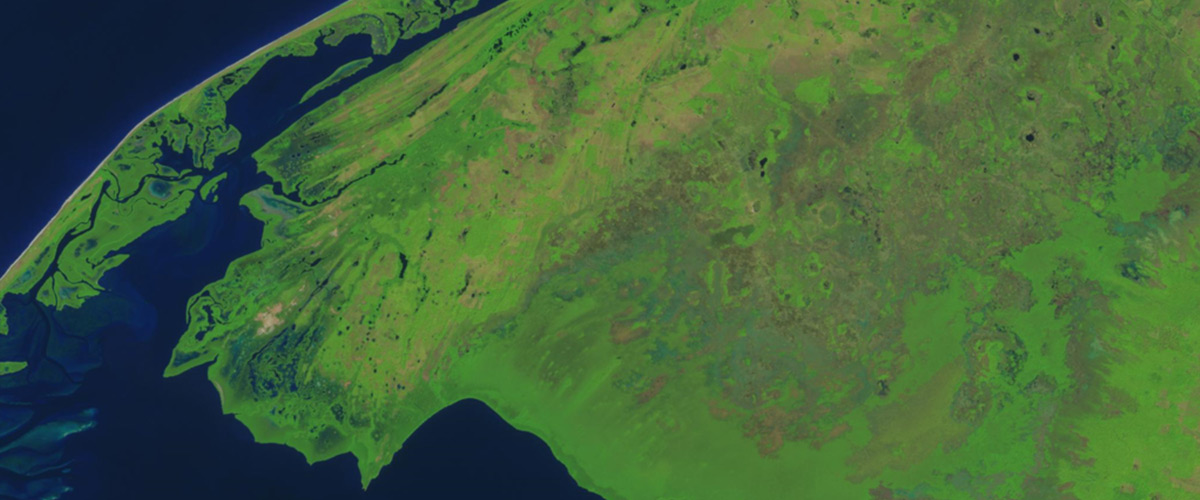PPSP Project Overview
The Punta de Piedra/Noham mangrove conservation and restoration project consists of 15,040 hectares located in the Sabancuy Estuary in the state of Campeche, Mexico. Mangrove species within the project area include Rhizophora mangle, Avicennia germinans, Laguncularia racemosa and Conocarpus erectus. The project area is part of the southwest Campeche flood plain and the estuary communicates with the northeast portion of Laguna de Términos complex. The hydrology consists of numerous flooded lowlands and high soluble salts content, as well as lagoons and wetlands. Mangrove degradation is a problem due to illegal logging and burning to make way for pasture lands. Without the project and planned activities, the mangroves will continue to be deforested.
The project’s conservation and restoration activities will be conducted entirely by local community members and will be trained by an experienced local cooperative managed by women. The project leadership will include local community members as well as financial benefit streams will flow directly to more than 500 local community families. Local community participation in the restoration and reforestation of 2,200 hectares of degraded mangrove area will provide incentive for the locals to preserve and protect the mangroves. In addition to the direct employment, the environmental services that will be provided by the ecosystem once recovered will include quality of habitat for fish and birds, improved water quality, as well as sequestration of more than 5.790 million tCO2e over the life of the project. From the 12,800 Ha of pristine mangroves, another 3.850 million tCO2e in avoided emissions will be prevented due to the conservation activities over the life of the project.
Relevant ecosystem services provided beyond carbon include ecotourism, local fishing for food, commercial fishing, and production of honey. The area is biologically rich, where 15 vegetative associations, with a total of 374 species are found. Threatened floral species found the area includes the Bletia purpurea, Bravaisia integerrima, B. tublifora. Endangered flora species found include the orchid Habenaria bractescens. Fauna estimates suggest that there are at least 1,468 species, both terrestrial and aquatic. Studies have found that the largest populations of the endangered jaguars (Panthera onca) are found in the Sabancuy area and around Laguna de Terminos, as well as the American crocodile (Cocodrylus acutus) and Morelet’s crocodile (C. Moreletii). The hawksbill turtle (Eretmochelys imbricata), green turtle (Chelonia midas) and Kemp’s Ridley turtle (Lepidochelys kempi) are under special protection. Lastly, preserving urban wetlands in good condition, contribute to making cities and towns safer from the manifestations of climate change.
Project Area Highlights:
- 15,040 Ha Mangrove
- 12,840 Ha Conservation
- 2,200 Ha Restoration
- 3,850,000 tCO2 Avoided
- 5,790,000 tCO2 Sequestered

KML File available for download
[real3dflipbook id=’21’]
Project Supplemental Information
(Click to start the presentation)
Sustainable Development Goals (SDGs) and Impacts
For a full list and explanation of each SDG, click here
Project Impacts and Outcomes

Implementation Timeline
To Be Determined
Related Imagery and Resources
Ongoing Field Worklog Notes
B1-2019 Ground-truth and site visit
Lorem ipsum dolor sit amet lectus quisque taciti ultrices ornare nec mauris tellus nullam platea ante consectetur placerat nam malesuada erat iaculis sapien magna morbi tempus tortor volutpat fringilla pretium porta hac libero pulvinar eleifend ex feugiat pharetra laoreet eu tristique luctus maecenas fusce volutpat finibus vestibulum eros viverra amet

